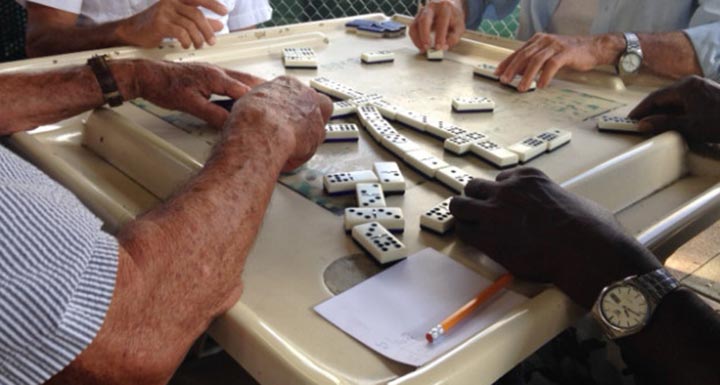
Little Havana’s changing voter profile
The Cuban vote in South Florida isn’t as monolithic as it once was.
Younger Cuban Americans don’t always share their parents’ conservative opinions about American foreign policy.
Besides, Miami’s Latino community is diversifying. Go to Little Havana these days, and you’re just as likely to see new immigrants from Venezuela and Colombia as old time Cubans.
The diversifying make up is also apparent in the governor’s race. Incumbent governor Rick Scott has picked a Cuban-American named Carlos Lopez Cantera as his running mate, while Democratic challenger (and former Republican governor) Charlie Crist has chosen a Colombian-American named Annette Taddeo-Goldstein.
In November, Latino voters will play a big role in determining the state’s next governor, but they’re notoriously difficult to bring out to the polls.
Here & Now’s Jeremy Hobson visited Little Havana on Calle Ocho, where many older Cubans still gather at a park to play dominoes. He met Fernando Gonzales, who came to the US in the 1960s.
“I never believe that the Democratic party is doing the right thing to this country,” Gonzales says.
You won’t be surprised to hear that he is voting for Rick Scott next month.
“I know that he has some problems, but everybody has problems.” Gonzales says. “When I vote for him, I vote for [the party of] Martin Luther King and Abraham Lincoln.”
But that view is not representative of today’s Florida Hispanic voters says Guillermo Grenier, a sociology professor in the department of global and social cultural studies at Florida International University.
“You have about 25 percent Democrat, 20 percent independent right now,” he says. “What you see is a younger generation of second and third generation Cuban-Americans that are more incorporated into the political environment of the United States.”
Grenier adds that most of the Cubans in Miami have recently arrived, not those who came during Fidel Castro’s repressive rule.
“35 percent of the Cubans in Miami-Dade Coutny right now came after 1995,” Grenier says. “That is the cohort that is growing. The new Cubans. They dont’ have the same memory of Cuba, they don’t have the same reasons for leaving. And when they get here, their concerns are different.”
Grenier says even little Havana is “an imagined place for Cuba.”
“In the real lived community here, Cubans are about 30 percent of the population,” he said.
Nicaraguans, Mexicans, Hondurans and Guatemalans make up significant proportions of the Hispanic population in Miami.
Alvaro Fernandez spends plenty of time talking to people on Calle Ocho and other streets around Miami. He tries to get Hispanic voters registered for the Miami Progressive Project.
“I would say this area is still a Republican area,” Fernandez says. “But you are starting to see in this area the change more toward the middle.”
He says Latino voters’ main issue is not immigration.
“It’s jobs,” Fernandez says. “They are becoming Americanized, they have the same issues as everyone else: the economy, the economy, the economy.”
Fernandez predicts, though, that Hispanic voters will have very low turnout at the coming governor’s election.
“They just feel neither party will help them,” he says. “They say, ‘Why waste my time? I’d rather be working, helping my family, than voting.’”

